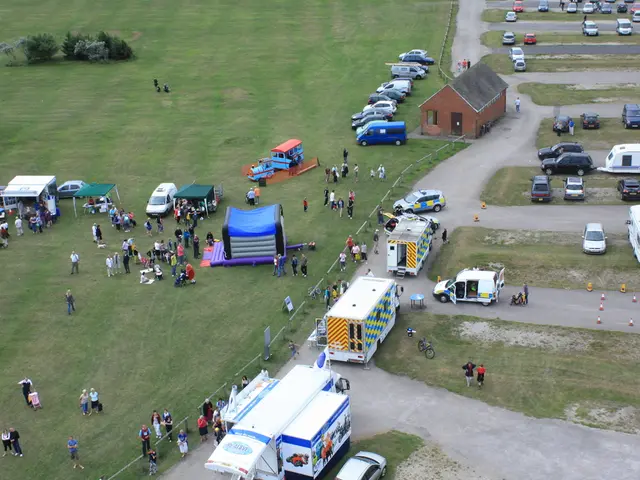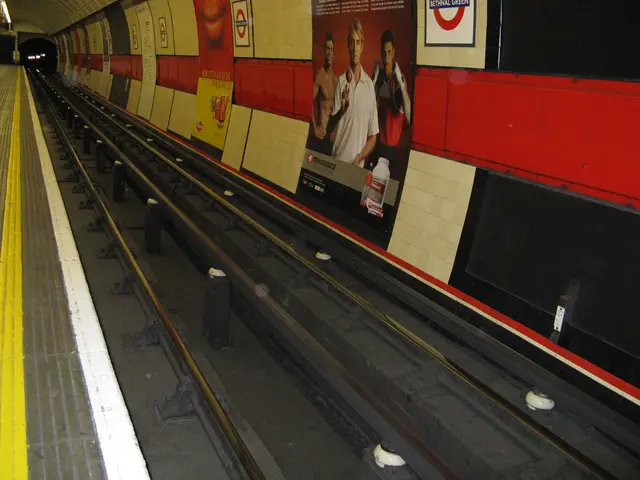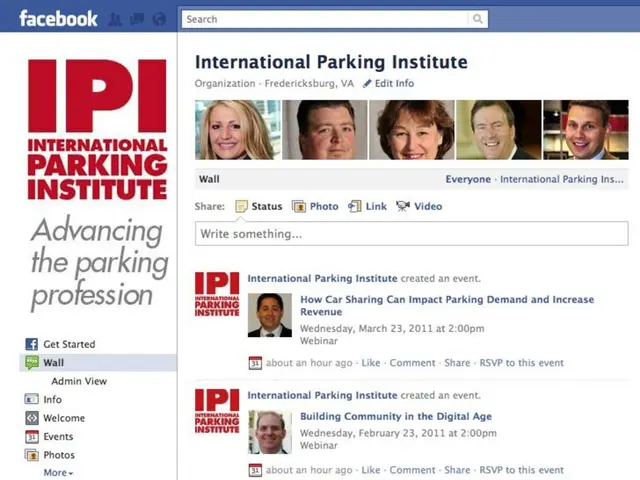Local authorities and municipalities should endorse the prudent usage of sidewalk delivery robots.
In the ever-evolving landscape of technology, delivery robots are making their mark, particularly on college campuses and city streets across the United States. These autonomous machines are revolutionising last-mile delivery, offering convenience and potential cost savings.
At Purdue University, more than 45,000 food deliveries have been completed by robots since August 2019, enabling students to enjoy meals from on-campus restaurants without leaving their dorms. This innovative service, however, raises questions about regulations and safety concerns.
In the absence of federal laws addressing the operation of delivery robots on public sidewalks, local jurisdictions are drawing from a menu of policies to set parameters for their deployment. For instance, San Francisco requires a permit for each robot being tested and limits the total number of permits to nine at any given time, mandating a human operator to be always present.
On the other hand, some state legislatures, such as Virginia and Wisconsin, have passed laws setting statewide policies on delivery robots, restricting municipalities from further regulating them. This approach aims to prevent burdensome local regulations that could limit adoption and potentially make cities appear anti-innovation.
Improving the safety and efficiency of delivery robots may require embedding intelligent communications systems in urban spaces. Government officials need to work with innovators to ensure delivery robots adapt to local conditions. Cities like Washington, D.C. and Austin, Texas are partnering with firms to find out what types of ordinances work for them.
Sidewalk delivery robots have been delivering items like pizza in the District of Columbia for several years. However, it's crucial for state and local policymakers to consider their role in the deployment of these robots before they rush to regulate. They should learn from each other's experiences in regulating delivery robots and work together to strike a balance between safety, convenience, and the benefits of implementing adaptive changes over the immediate and long terms.
Regulations should support, not deter delivery robot adoption to boost local economic growth. Autonomous robots can lower the cost of last-mile delivery and reduce street congestion caused by double-parked delivery trucks. Advances in robotics create opportunities to leverage robotics in everyday life, including delivery robots sharing public spaces with pedestrians, cyclists, and vehicles.
Some commentators argue that cities are the best suited sites of experimentation for urban robots, and city lawmakers should be allowed autonomy in their effort to regulate the design and deployment of urban robotics in public space. Yet, state and local officials should also revamp and redesign public spaces to facilitate delivery robot operation.
In conclusion, the integration of delivery robots into our urban landscapes presents a unique blend of challenges and opportunities. By working with community stakeholders and learning from each other's experiences, we can ensure that these devices are deployed safely and efficiently, contributing to the growth and progress of our cities.
Read also:
- Understanding Hemorrhagic Gastroenteritis: Key Facts
- Stopping Osteoporosis Treatment: Timeline Considerations
- Expanded Community Health Involvement by CK Birla Hospitals, Jaipur, Maintained Through Consistent Outreach Programs Across Rajasthan
- Abdominal Fat Accumulation: Causes and Strategies for Reduction







